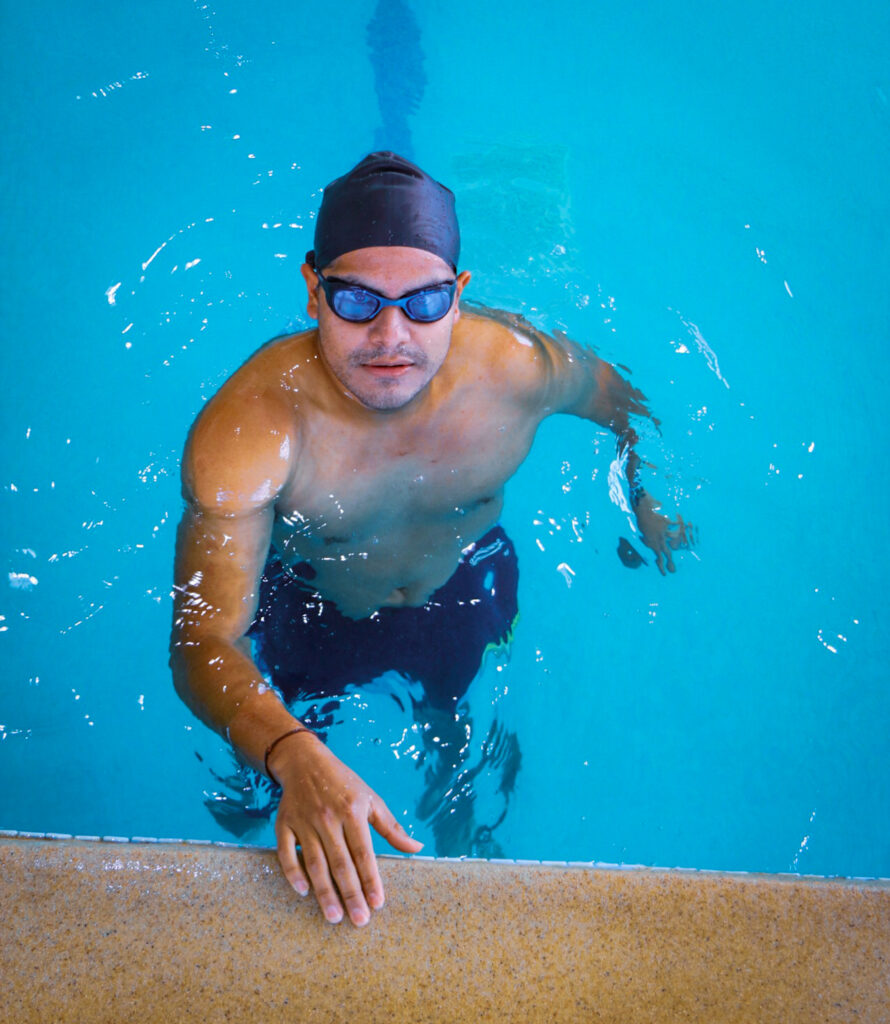If you’ve been wondering about the best way to keep your outdoor pools and spas sparkling clean, look no further! This article will guide you through the process of vacuuming and cleaning these refreshing water retreats, ensuring that they remain inviting and crystal clear all season long. Whether you’re a seasoned pool owner or a new enthusiast, we’ve got you covered with simple yet effective tips and tricks that will have your pools and spas looking their best in no time. So grab your cleaning gear and get ready to dive into a world of cleanliness and relaxation!
Preparing the pool or spa for cleaning
Before you begin vacuuming and cleaning your outdoor pool or spa, it’s important to prepare the area properly. Follow these steps to ensure a successful cleaning process.
Remove any debris
Start by removing any visible debris from the surface of the pool or spa. This includes leaves, twigs, and any other floating objects. You can use a leaf skimmer or net to easily scoop up the debris and dispose of it properly. Removing debris will make the cleaning process more efficient and prevent clogging of the cleaning equipment.
Clean the walls and floor
Next, it’s time to clean the walls and floor of your pool or spa. Use a pool or spa brush designed for your specific type of surface, whether it’s tile, fiberglass, or concrete. Scrub the walls and floor in a systematic and thorough manner, paying special attention to any areas with visible dirt or stains. This step will help remove any algae or grime buildup and ensure a clean and pristine swimming experience.
Empty the skimmer baskets
Skimmer baskets play a crucial role in maintaining a clean pool or spa by collecting debris and preventing it from clogging the pump and filter. To empty the skimmer baskets, turn off the pump and locate the skimmer baskets near the water’s edge. Remove the skimmer basket lid and take out the basket. Clean the basket thoroughly, removing any leaves or debris that may have accumulated. Once cleaned, replace the skimmer basket and securely fasten the lid back in place.
Clean the filter
The filter is an essential component of any pool or spa system, as it removes small particles and contaminants from the water. Cleaning the filter regularly will help maintain optimal filtration efficiency. To clean the filter, make sure to turn off the pump first. Locate the filter and remove the filter lid. Take out the filter cartridge or grids, depending on your specific filter type. Hose off the filter element to remove debris and dirt, ensuring that water flows through it easily. If necessary, clean the filter housing as well. Once cleaned, replace the filter cartridge or grids and securely fasten the filter lid.
Check and adjust the water chemistry
Maintaining proper water chemistry is vital for the health and safety of anyone using your pool or spa. This includes checking and adjusting the pH level, chlorine or sanitizer level, and alkalinity and calcium hardness levels. Using a chemical test kit or water test strips, test the water to get accurate readings. Based on the results, adjust the water chemistry by adding the necessary chemicals to achieve the desired levels. Regularly checking and adjusting the water chemistry will help prevent the growth of bacteria, algae, and other potential issues.
Choosing the right tools and equipment
To effectively vacuum and clean your outdoor pool or spa, you’ll need the right tools and equipment. Here are some essential items you should have on hand.
Pool or spa vacuum
A pool or spa vacuum is specifically designed to remove dirt and debris from the bottom of your pool or spa. Choose a vacuum that suits your pool or spa type and size. There are manual and automatic vacuums available, so choose the one that best fits your cleaning preferences and needs.
Telescopic pole
A telescopic pole is a versatile tool that allows you to attach different cleaning attachments, such as brushes and vacuums, to reach various areas of your pool or spa. Look for a pole that extends to the appropriate length for your pool or spa size and adjustability for easy handling.
Pool or spa brush
A pool or spa brush is essential for cleaning the walls and floor of your pool or spa. Different brushes are designed for specific surfaces, so make sure to choose one that is suitable for your pool or spa type.
Leaf skimmer or net
A leaf skimmer or net is used to remove larger debris from the surface of your pool or spa. This tool is especially useful for quickly clearing leaves, twigs, and other floating objects before you start the cleaning process.
Chemical test kit
A chemical test kit is necessary for regularly checking and adjusting the water chemistry of your pool or spa. It typically includes test solutions or test strips to measure pH level, chlorine or sanitizer level, alkalinity, and calcium hardness. Choose a test kit that is easy to use and provides accurate results.
Water test strips
Water test strips are an alternative to chemical test kits and offer a quick and convenient way to test your water chemistry. These strips are dipped into the water and change color to indicate the levels of various chemical components.
Filter cleaner
A filter cleaner is used to remove built-up dirt, oils, and debris from your pool’s or spa’s filter. It helps maintain optimal filtration and prolongs the life of your filter. Make sure to choose a cleaner that is compatible with your specific filter type.

Vacuuming the pool or spa
Vacuuming your pool or spa is an important step in maintaining cleanliness and removing any accumulated dirt or debris. Follow these steps to properly vacuum your pool or spa.
Attach the vacuum head to the telescopic pole
Start by attaching the vacuum head to the telescopic pole. Make sure it is securely fastened to prevent any detachment during the cleaning process. The vacuum head should have brushes or bristles on the underside to loosen dirt and debris as you move across the surface.
Connect the hose to the vacuum head
Next, connect the vacuum hose to the vacuum head. Ensure a tight connection to prevent any leakage or loss of suction. The other end of the hose should be connected to the suction port or skimmer inlet of your pool or spa.
Prime the vacuum hose
To ensure proper suction, it’s important to prime the vacuum hose before starting the cleaning process. You can do this by placing the free end of the hose into the pool or spa water, allowing it to fill completely and expel any air. Once the hose is filled with water, seal the end with your hand or a vacuum plate before connecting it to the suction port.
Start vacuuming the pool or spa
With the vacuum connected and hose primed, you can now start vacuuming the pool or spa. Move the vacuum head slowly and methodically across the entire surface, paying extra attention to areas with visible dirt or debris. Overlapping your passes will ensure thorough cleaning and prevent any missed spots.
Empty the collection bag or filter basket as needed
As you vacuum, the collected debris will be collected in a collection bag or filter basket. Make sure to monitor the accumulation and empty as needed to prevent clogging or loss of suction. Dispose of the debris properly and continue the vacuuming process until the entire pool or spa has been cleaned.
Cleaning the walls and floor
Cleaning the walls and floor of your pool or spa is essential for maintaining cleanliness and preventing the growth of algae and other contaminants. Here’s how you can effectively clean the walls and floor of your pool or spa.
Scrub the walls with a pool or spa brush
Start by scrubbing the walls of your pool or spa using a pool or spa brush that is suitable for your specific surface type. Apply gentle pressure and use overlapping strokes to cover the entire surface. This will help remove any dirt, grime, or algae buildup that may have accumulated over time.
Remove stubborn stains with a pool or spa stain remover
If you notice any stubborn stains on the walls of your pool or spa that cannot be removed by brushing alone, you may need to use a pool or spa stain remover. Follow the instructions on the product label and apply the stain remover directly to the affected area. Allow the stain remover to sit for the recommended time before scrubbing with a brush and rinsing thoroughly.
Brush and vacuum the pool’s or spa’s floor
After cleaning the walls, it’s time to focus on the floor of your pool or spa. Using a pool or spa brush, scrub the floor in a systematic and thorough manner. This will help remove any dirt or debris that may have settled on the bottom. After brushing, you can use a vacuum or manual cleaner to remove the loosened dirt and debris from the floor.
Pay special attention to corners, steps, and crevices
When cleaning the walls and floor, remember to pay special attention to corners, steps, and crevices. These areas are prone to collecting dirt, debris, and algae, so thorough cleaning is essential. Use a brush or specialized cleaning tool to reach these areas and ensure a comprehensive clean.

Emptying the skimmer baskets
Regularly emptying the skimmer baskets is an important part of pool and spa maintenance. Follow these steps to effectively empty the skimmer baskets.
Turn off the pool or spa pump
Before emptying the skimmer baskets, make sure to turn off the pool or spa pump. This will ensure your safety and prevent any accidents while handling the skimmer baskets.
Locate the skimmer baskets
Skimmer baskets are typically located near the water’s edge and are easily accessible. Take note of where the skimmer baskets are located in your pool or spa.
Remove the skimmer basket lid
Once you’ve located the skimmer baskets, remove the skimmer basket lid by twisting it counterclockwise. This will allow you to access the skimmer basket and remove it for cleaning.
Take out the skimmer basket
With the lid removed, carefully lift the skimmer basket out of the skimmer housing. You may need to tilt the basket slightly to free it from the housing. Be cautious not to spill any debris back into the pool or spa.
Clean the skimmer basket
Once the skimmer basket is removed, clean it thoroughly by rinsing it with a hose or spraying it with water. This will remove any leaves, debris, or impurities that may have been collected. Keep in mind that the skimmer basket may contain algae or other potentially harmful substances, so wear gloves to protect your hands during cleaning.
Replace the skimmer basket and lid
After cleaning the skimmer basket, place it back into the skimmer housing, ensuring it fits securely. Then, replace the skimmer basket lid by twisting it clockwise until it is tightly sealed. This will prevent any debris from entering the skimmer housing and clogging the pump or filter.
Cleaning the filter
Cleaning the filter is crucial to maintain optimal filtration efficiency in your pool or spa. Here’s a step-by-step guide to cleaning your filter effectively.
Turn off the pool or spa pump
Before cleaning the filter, make sure to turn off the pool or spa pump. This will ensure your safety and prevent any accidents while working on the filter.
Locate the filter
Filters can be located in different areas depending on your pool or spa system. Common locations include a dedicated filter room, an equipment pad, or an attached filter system. Familiarize yourself with the location of your filter before proceeding.
Remove the filter lid
With the pump turned off, remove the filter lid by loosening or unscrewing it, depending on the type of filter you have. Set the lid aside in a safe place where it won’t be damaged.
Take out the filter cartridge or grids
Once the filter lid is removed, carefully take out the filter cartridge or grids, depending on the type of filter you have. Inspect them for any visible signs of damage or wear and tear.
Hose off the filter element to remove debris
Using a hose or spray nozzle, gently rinse the filter element to remove any dirt, debris, or particles that may have accumulated. Direct water flow in the opposite direction of normal flow to dislodge the debris effectively. Take care not to use excessive water pressure, as it may damage the filter element.
Clean the filter housing if necessary
While the filter element is being cleaned, inspect the filter housing for any visible dirt or debris. If necessary, clean the housing using a brush or a cloth to remove any built-up grime. This will help maintain the overall cleanliness and efficiency of your filter system.
Replace the filter cartridge or grids
Once the filter element and housing are cleaned, it’s time to replace the filter cartridge or grids. Make sure they are placed correctly and securely, following the manufacturer’s instructions. Properly positioning the filter element will prevent any leaks or inefficient filtration.
Secure the filter lid
After replacing the filter cartridge or grids, securely fasten the filter lid back in place. Ensure the lid is tightly sealed to prevent any air or debris from entering the filter system. A secure lid will also maintain optimal pressure for efficient filtration.

Checking and adjusting the water chemistry
Maintaining balanced water chemistry is essential for the health and safety of your pool or spa. Regularly check and adjust the water chemistry using the following steps.
Test the water using a chemical test kit or water test strips
To accurately assess the water chemistry of your pool or spa, use a chemical test kit or water test strips. These test methods measure different parameters such as pH level, chlorine or sanitizer level, alkalinity, and calcium hardness. Follow the instructions provided with the test kit or strips to obtain accurate results.
Check the pH level and adjust if needed
The pH level measures the acidity or alkalinity of the water. The ideal pH range for pools is typically between 7.2 and 7.8, while spas may have a slightly lower range. If the pH level is too high or too low, adjust it accordingly using pH increaser or pH reducer products. Follow the manufacturer’s instructions and add the appropriate amount of chemicals to bring the pH level within the recommended range.
Check the chlorine or sanitizer level and adjust if needed
Chlorine or other sanitizers are crucial for maintaining water clarity and preventing the growth of bacteria and algae. Use a test kit or strips to measure the chlorine or sanitizer level in your pool or spa. The ideal range for chlorine is typically between 1 and 3 parts per million (ppm). If the level is too low, add the appropriate amount of chlorine or sanitizer to achieve the desired range. If the level is too high, wait for it to naturally decrease before adding any chemicals.
Check the alkalinity and calcium hardness levels
Alkalinity and calcium hardness are important for water balance and can affect the overall health of your pool or spa. Test the alkalinity and calcium hardness levels using your chosen test method. The recommended range for alkalinity is typically between 80 and 120 ppm, while calcium hardness should be between 200 and 400 ppm for pools and slightly higher for spas. Adjust the levels accordingly using alkalinity increaser or calcium hardness increaser products.
Add any necessary chemicals to balance the water chemistry
Based on the results of your water test, you may need to add additional chemicals to balance the water chemistry. This may include chlorine or sanitizer, pH increaser or reducer, alkalinity increaser, or calcium hardness increaser. Follow the manufacturer’s instructions carefully and add the appropriate amount of each chemical to achieve the recommended levels. Regularly test and adjust your water chemistry to maintain a safe and enjoyable swimming environment.
Maintaining the pool or spa
Regular maintenance is key to keeping your pool or spa clean and in optimal condition. Incorporate these tasks into your routine maintenance to ensure a pristine swimming experience.
Regularly skim the surface for debris
To prevent debris from settling to the bottom and reducing water clarity, make it a habit to skim the surface of your pool or spa regularly. Use a leaf skimmer or net to remove any leaves, bugs, or other floating objects. This simple task will help keep your pool or spa looking clean and inviting.
Brush the walls and floor to prevent algae growth
Regularly brushing the walls and floor of your pool or spa will help prevent the growth of algae and other contaminants. Use a pool or spa brush suitable for your surface type and thoroughly brush in overlapping strokes. Brushing should be done at least once a week or more frequently if needed, depending on your pool or spa usage and environmental factors.
Check and adjust the water chemistry on a regular basis
Maintaining balanced water chemistry is an ongoing process. Make it a habit to check and adjust the water chemistry of your pool or spa on a regular basis. This can help prevent water-related problems such as algae growth, cloudy water, or skin irritation. Follow the steps outlined earlier to test and adjust the pH, chlorine/sanitizer level, alkalinity, and calcium hardness as needed.
Clean and replace the filter as recommended by the manufacturer
The filter is an essential component of your pool or spa system and requires regular cleaning and maintenance. Refer to the manufacturer’s guidelines for specific recommendations on cleaning frequency and procedures. Regularly cleaning and replacing the filter will ensure optimal filtration efficiency and extend the lifespan of your filter.
Keep the water level at the proper height
Maintaining the proper water level is important for the overall health and functioning of your pool or spa system. The water level should be within the manufacturer’s recommended range, typically halfway up the skimmer opening. Monitor the water level regularly and adjust as needed by adding or draining water.
Cover the pool or spa when not in use
When your pool or spa is not in use, covering it can help prevent debris from entering and reduce the need for frequent cleaning. Use a pool cover or spa cover that is suitable for your specific model and size. This will not only keep your pool or spa cleaner but also help save on water and chemical usage.
Troubleshooting common pool or spa cleaning issues
Even with regular maintenance and cleaning, you may encounter some common pool or spa cleaning issues. Here are some troubleshooting tips to help you address these problems.
Cloudy water
Cloudy water in your pool or spa can be caused by various factors, such as improper water chemistry, insufficient filtration, or high levels of organic matter. First, test your water chemistry and adjust it if needed. Make sure your filter is clean and functioning properly. If the issue persists, consider using a clarifier to help clear the water.
Green or discolored water
Green or discolored water is often a sign of algae growth in your pool or spa. Test and adjust your water chemistry, with a focus on the chlorine or sanitizer level. Shock your pool or spa with a high dose of chlorine to kill the algae. Brush the affected areas and run the filtration system continuously until the water clears. In severe cases, you may need to use an algaecide or seek professional help.
Algae growth
Algae growth can occur when there is insufficient chlorine or sanitizer in the pool or spa. Test and adjust your water chemistry, particularly the chlorine or sanitizer level. Brush the affected areas and shock the water with chlorine to kill the algae. Regularly brushing and maintaining proper water chemistry will help prevent future algae growth.
Pool or spa pump not working
If your pool or spa pump is not working, check for any visible signs of damage or blockage. Ensure that the power supply is connected and working correctly. If you’re unable to identify the issue, it’s best to consult a professional pool technician for further assistance.
Filter not cleaning the water effectively
If you notice that your filter is not cleaning the water effectively, it may be due to a clogged or dirty filter element. Remove and clean the filter cartridge or grids following the steps outlined earlier. If cleaning doesn’t resolve the issue, it may be time to replace the filter element or seek professional help to diagnose any potential problems.
Conclusion
Regular cleaning and maintenance are essential for keeping your outdoor pool or spa clean, safe, and enjoyable. By following the steps and guidelines outlined in this article, you’ll be well-equipped to properly vacuum and clean your pool or spa. Remember to prepare the pool or spa before cleaning, choose the right tools and equipment, vacuum and clean the pool or spa thoroughly, empty the skimmer baskets and clean the filter, and regularly check and adjust the water chemistry. Additionally, maintaining the pool or spa through regular skimming, brushing, water chemistry checks, filter maintenance, water level control, and covering when not in use will help keep your pool or spa in excellent condition. If you encounter any common cleaning issues, troubleshoot them promptly to keep your pool or spa running smoothly. By following these steps and guidelines, you’ll enjoy a clean and healthy pool or spa all year round.

